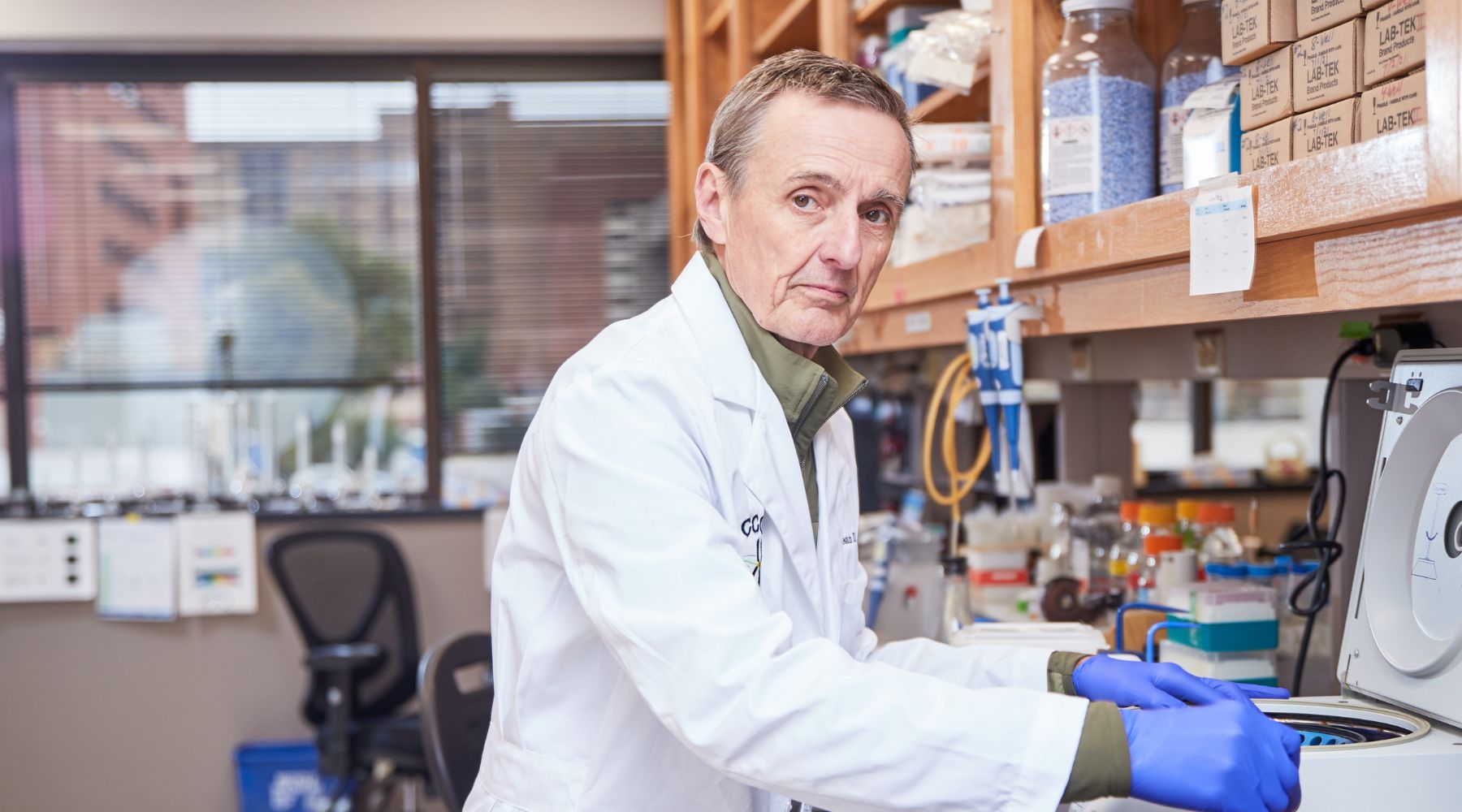Cell division takes place naturally and continuously inside all of us. To Oklahoma Medical Research Foundation scientist Dean Dawson, Ph.D., the process is a lot like dealing cards.
“You might be able to perfectly deal 46 cards each to two players once, but could you do it millions of times in a row and always know each player will get exactly 46 cards, no mistakes?” said Dawson. “That is what your body is trying to do with chromosomes.”
While a card-dealing snafu can cost a gambler money, the stakes in cell division are much higher: Errors can cause genetic birth defects in the womb and cancer in children and adults.
Dawson has devoted his scientific career to understanding how and why these mistakes occur. With a new $2.1 grant from the National Institutes of Health, the OMRF scientist will continue that quest.
Every cell contains 46 chromosomes – one set of 23 from each parent. As a cell prepares to divide into two new cells, it makes copies of these chromosomes and deals 46 to both new cells.
“What amazes me is how precise this process is, given the fact that it’s happening constantly throughout our bodies,” said Dawson, who’s led a lab at OMRF for nearly two decades. “By the time we’re adults, the body has gone through this process trillions of times.”
Dawson will try to determine how each piece in the mechanism functions. Similar to an auto mechanic, he believes that only by understanding how the body functions properly can scientists determine what leads to mistakes.
“If your mechanic’s manual was missing the page on the fuel injector, then anytime you had a fuel injector problem, your mechanic would just throw their hands up in the air,” Dawson said. “We’re trying to provide a complete parts manual for cell division so that eventually we can understand why cells sometimes produce the wrong number of chromosomes.”
Most tumor cells have far more than the normal number of chromosomes. Dawson’s grant also will investigate which parts of the chromosome machinery are most crucial in keeping the tumor cell alive. That knowledge, he said, might identify a location for future anti-cancer drugs that disable the machinery.
“When something goes wrong, you can’t fix it if you don’t fully understand how it works correctly in the first place,” said Gary Gorbsky, Ph.D., who chairs OMRF’s Cancer & Cell Cycle Biology Research Program. “That’s what Dr. Dawson’s research is all about. I’m excited to see what he learns.”
The five-year award is part of the Maximizing Investigators’ Research Award, or MIRA, program. MIRA grants give scientists latitude to use the funding to support a wide range of needs; the increased freedom is intended to enhance both productivity and the likelihood of important, even unplanned, breakthroughs.
The grant, No. R35 GM152165-01, is from the National Institute of General Medical Sciences, part of the NIH. Dawson also received funding from the Presbyterian Hospital Foundation and preliminary research support from the Oklahoma Center for Adult Stem Cell Research, a program of TSET.



